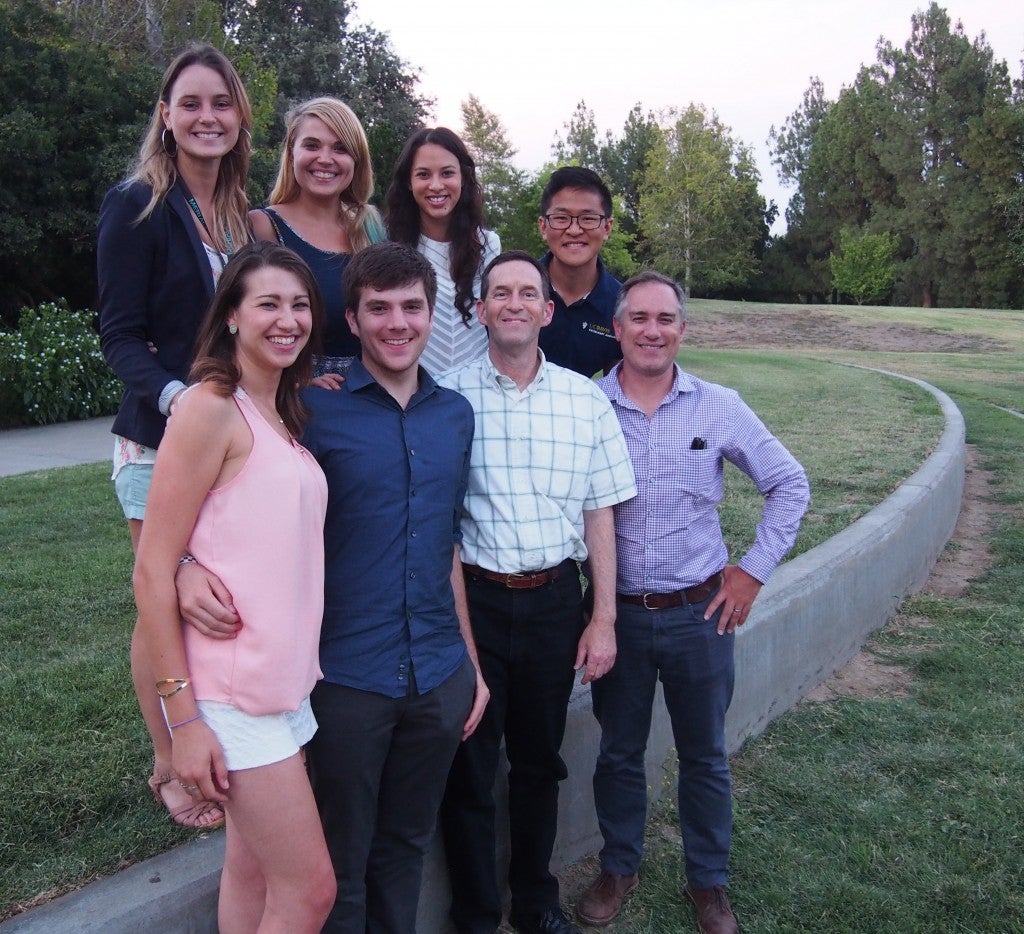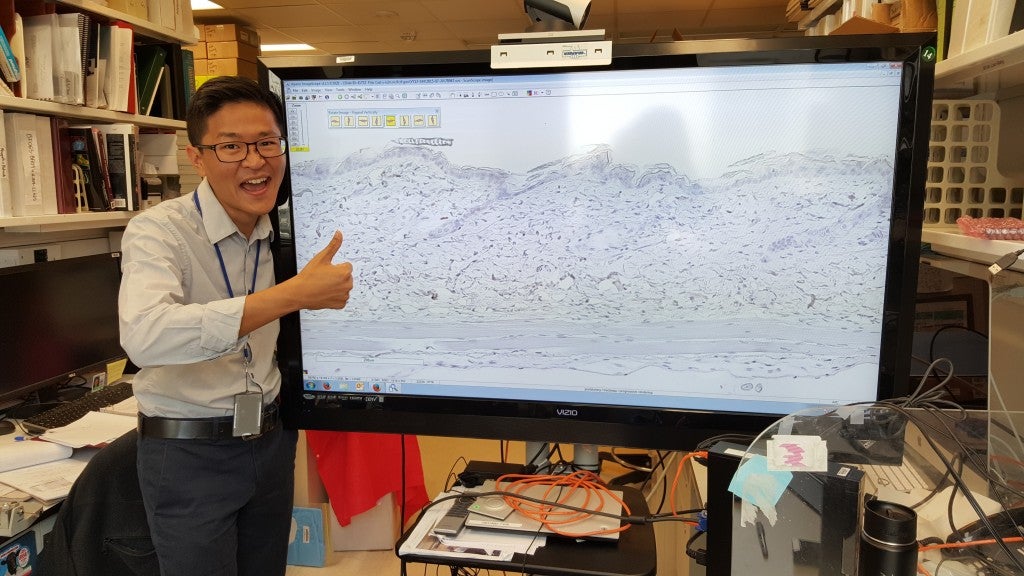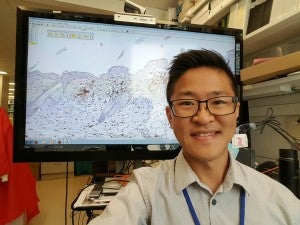Steven Hsu, Class of 2018, spent eight weeks this past summer as an intern with the National Institutes of Health in Bethesda. I spent a little time chatting with him about his experiences and his path to veterinary medicine.
How did you decide on a career in veterinary medicine? Did you have a bunch of animals growing up?
I love animals, but I didn’t have any while I was a kid. I was born in Taipei, Taiwan and when we moved to the U.S., we lived in a city in Southern California. But in high school, I was really interested in medicine and figured veterinary medicine would be an easy way to merge my love for animals with an interest in medicine. I also volunteered at a local shelter during high school in Rancho Cucamonga—that helped solidify my career choice.
How did you hear about the internship opportunity at NIH?
One of my instructors, Professor Kevin Woolard recommended it. He taught numerous class pertaining to pathology, which I really enjoyed. If memory serves me right, he did his DVM and Ph.D. at North Carolina State, and did his post-doc at NIH.
What were some of the highlights of your visit/internship?
The directors, Drs. Mark Simpson and Charles Halsey, took our group of six veterinary students across Maryland on field trips—to the FDA, and different laboratory animal facilities around the Bethesda campus. We visited laboratories that studied frogs, zebra fish, primates, and of course, rodent facilities. It was my first time out east—my first time traveling past Texas actually. I met five other veterinary students from across the nation and Canada and it was interesting to see how different and yet similar we are—there was a lot of diversity among our backgrounds and interests. I learned I didn’t want to just focus on diagnostic applications of vet med. Those field trips were really helpful in seeing various careers and choosing what I’d like to do and what not to do. Even though I was sure about a career in veterinary pathology, I didn’t realize the variety of career choices within the field and the value of mentors to help guide me through the process.

Steven Hsu, on far upper right, spent eight weeks over the summer with this group of fellow veterinary students from across the US and Canada.
What did you work on while in the NIH lab?
I worked on evaluating the efficacy of using a new drug for attenuating the inflammation associated with chronic dermatitis in a transgenic inflammatory mouse model. I could see the differences under the microscope in skin where the treatment developed in the lab had been used and it was amazing to see the improvement. We could see how the new drug could be applied to multiple diseases in both animals and humans. At first, I didn’t appreciate the importance of our work, until my supervisor asked me to not talk about the specific details of it. What we did this summer at the NIH is truly state-of-the-art, cutting edge work. I was able to take the research I did over the summer and present it during the poster session of the National Merial-NIH Veterinary Scholars Symposium that took place at UC Davis this year, the American College of Veterinary Pathologists (ACVP) and Society of Toxicologic Pathology (STP) Conference in Minneapolis.
Where do you want to focus your career?
I wasn’t sure when I came to UC Davis as an undergraduate in Animal Science. I did an internship with beef cattle—Black Angus mostly with some Hereford cattle. I was afraid of them at first—it was my first experience with large animals! Then, in my third and fourth year, I did a residency at the hog barn where I literally lived there. I worked through the entire process from farrowing to finish.
I wasn’t sure at first where I wanted to focus in veterinary medicine when I started veterinary school, but soon found pathology very interesting and a good way to support the field of veterinary medicine. Then I got more into it when I started attending the Friday morning biopsy conferences where we saw a myriad of rare and fascinating cases come through. Dr. Pesavento does such a great job teaching us, a small group of aspiring pathologists, with such charisma that I couldn’t resist doing some exploration myself.
What fascinates you about this avenue of veterinary medicine?
When I first discovered pathology I was drawn in by the cool “pink and purple blobs” that all my friends “had strong opinions about.” Although usually negative, I loved the way it looks. Those pink and purple blobs are the cells and connective tissue which are the gears and lubricant that make whole biological systems function. Each cell tells a story, and it takes a keen eye, patience, and deep knowledge to interpret. I always get the question of why I wanted to be a pathologist from my friends and family, and I would also answer them with this: medicine is about solving a complex biological puzzle, and pathology is the last piece to that puzzle. It seems like everyone understood after that.
I’m also interested in discovering different ways to treat diseases and going into pathology would allow me to give back to the profession by coming up with new and better treatments that may also translate to human medicine.
What are your plans after obtaining your DVM?
I’d like to pursue a residency in anatomic pathology and possibly a Ph.D.— luckily a lot of those programs are combined with a Ph.D. Ideally, I want to do research with some collaborative work. I want to stay close to the ground and see things happen—whether it’s putting a new drug on the market or dissecting a complex disease.


